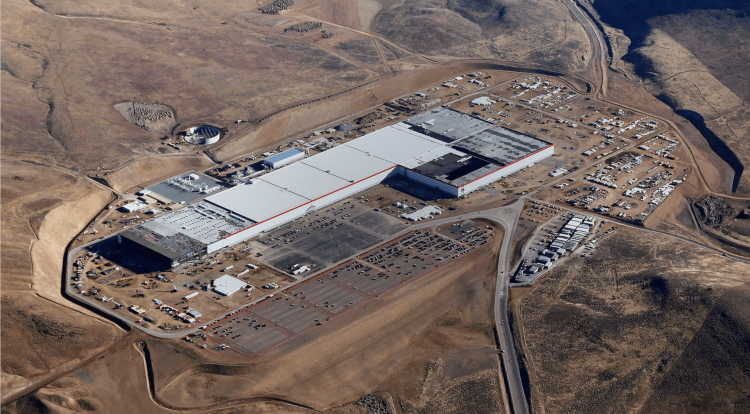Tesla will make electric motors for its new Model 3 sedan at its massive $5 billion factory in Nevada, Gov. Brian Sandoval said on Tuesday night, as the automaker prepares to start producing the mass market vehicle later this year.
Elon Musk’s company will invest an additional $350 million to outfit its storied, so-called gigafactory with production lines to make the electric motors and gearbox components, according to remarks made by the governor during his State of the State speech. The Model 3 vehicle will be produced at the company’s Fremont, Calif. factory.
The move will lead to 550 new jobs, Sandoval said.
Bringing electric motor production to the Nevada factory allows Tesla to maximize the footprint of its Fremont factory, in which every inch of the hefty 5.3 million-square-foot space will be needed, as the company pushes toward its goal of producing 500,000 vehicles annually.
While the Fremont factory is landlocked, the Nevada gigafactory is located across some 3,200 acres, with plenty of space to expand.
Gov. Sandoval thanked Tesla for “doubling down” on its commitment to the state, noting that the company has already provided significant economic growth for Nevada.
Tesla currently has 1,000 people employed in full-time positions, and another 2,000 construction workers onsite, said Sandoval.
Tesla agreed to create 6,500 jobs as part of a nearly $1.4 billion tax incentives package approved by the state legislature and the governor in September 2014. However, Musk has said that eventually the factory will employ 10,000 people.
The electric carmaker expects the factory, which will have more than 10 million square feet of operational space, to be the biggest building in the world once it’s complete. The current structure of the factory has a footprint of 1.9 million square feet, which houses 4.9 million square feet of operational space across several floors. About 30% of the factory is complete.
When combined with the battery—which is already being produced at the gigafactory—most of the Model 3 electric powertrain will be made in Nevada. Tesla in early January started mass-producing lithium-ion battery cells at the factory, located in the Tahoe-Reno Industrial Center. In the second quarter, the gigafactory will start making battery cells for its $35,000 Model 3 sedan.
The battery packs and electric motors will be shipped to Tesla’s factory in Fremont, Calif., where the Model 3 vehicle will be produced.
Tesla will not receive any additional incentives on top of the deal it struck with the state in 2014, a spokesperson said. However, the company will receive the same property and sales tax benefits and job credits agreed upon for the gigafactory. In other words, the sales tax benefit will extend to the equipment Tesla invests in to help produce the electric motors.
By 2018, the Nevada factory will produce 35 gigawatt-hours a year of lithium-ion battery cells, almost as much as the rest of the world’s battery production combined.
This story originally appeared on Fortune.com. Copyright 2017
VentureBeat's mission is to be a digital town square for technical decision-makers to gain knowledge about transformative enterprise technology and transact. Learn More

